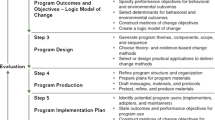Abstract
Half of all pregnancies in Canada are unintended. Whether a pregnancy is intended or unintended has a bearing on the risk of prenatal alcohol exposure. Research indicates that women who experience an unintended pregnancy are significantly more likely to consume alcohol while pregnant. Most fetal alcohol spectrum disorder (FASD) prevention frameworks in Canada have adopted a mid-stream approach focused on preventing alcohol consumption among women who are already pregnant. Yet there is a second approach, further upstream, that is rarely discussed as an FASD prevention tool in this country - preventing unintended pregnancy itself. Improving access to long-acting reversible contraceptives for women and girls who are experiencing cost and access barriers to these methods could do much to stem the incidence of FASD and the prohibitive health and social costs associated with this disorder in Canada.
Résumé
La moitié des grossesses au Canada sont non désirées. Qu’une grossesse soit voulue ou non a une incidence sur le risque d’exposition prénatale à l’alcool. Des études ont montré que les femmes qui vivent une grossesse non désirée sont de manière significative plus susceptibles de consommer de l’alcool lorsqu’elles sont enceintes. La plupart des cadres de prévention du trouble du spectre de l’alcoolisation fœtale (TSAF) au Canada emploient une approche à mi-parcours, qui vise à prévenir la consommation d’alcool des femmes déjà enceintes. Pourtant, il existe une deuxième approche, plus en amont, dont on discute rarement en tant qu’outil de prévention du TSAF dans ce pays: prévenir les grossesses non désirées. Le fait d’améliorer l’accès aux contraceptifs réversibles et à longue durée d’action pour les femmes et les filles qui n’ont pas les moyens de s’en procurer ou qui n’y ont pas accès contribuerait beaucoup à réduire l’incidence du TSAF et les coûts sanitaires et sociaux associés à ce trouble au Canada.
Similar content being viewed by others
References
Public Health Agency of Canada. What mothers say: The Canadian Maternity Experiences Survey. Ottawa, ON: Public Health Agency of Canada, 2009.
Chudley AE, Conry J, Cook JL, Loock C, Rosales T, LeBlanc N. Fetal alcohol spectrum disorder: Canadian guidelines for diagnosis. CMAJ 2005;172(Suppl):S1–S21.
May PA, Gossage JP, Kalberg WO, Robinson LK, Buckley D, Manning M, Hoyme HE. Prevalence and epidemiologic characteristics of FASD from various research methods with an emphasis on recent in-school studies. Developmental Disabilities Research Reviews 2009;15(3):176–92.
Stade B, Ali A, Bennett D, Campbell D, Johnston M, Lens C, et al. The burden of prenatal exposure to alcohol: Revised measurement of cost. Can J Clinical Pharmacology 2009;16(1):e91–102.
Clarren SK, Salmon A, Jonsson E. Introduction. In: Clarren SK, Salmon A, Jonsson E (Eds.), Prevention of Fetal Alcohol Spectrum Disorder (FASD): Who Is Responsible? Weinheim, Germany: Wiley-Blackwell, 2011; 1–26.
Ospina M, Moga C, Dennett L, Harstall C. A systematic review of the effectiveness of prevention approaches for fetal alcohol spectrum disorder. In: Clarren SK, Salmon A, Jonsson E (Eds.), Prevention of Fetal Alcohol Spectrum Disorder (FASD): Who Is Responsible? Weinheim: Wiley-Blackwell, 2011; 32–98.
Gillam S, Yates J, Badrinath P (Eds.). Essential Public Health: Theory and Practice. New York: Cambridge University Press, 2012.
Singh S, Sedgh G, Hussain R. Unintended pregnancy: Worldwide levels, trends, and outcomes. Studies in Family Planning 2010;41(4):241–50.
Walker MJ, Al-Sahab B, Islam F, Tamim H. The epidemiology of alcohol utilization during pregnancy: An analysis of the Canadian Maternity Experiences Survey (MES). BMC Pregnancy and Childbirth 2011;11(1):52.
Black A, Yang Q, Wen SW, Lalonde AB, Guilbert E, Fisher W. Contraceptive use among Canadian women of reproductive age: Results of a national survey. J Obstet Gynaecol Can 2009;31(7):627–40.
Winner B, Peipert JF, Zhao Q, Buckel C, Madden T, Allsworth JE, Secura GM. Effectiveness of long-acting reversible contraception. N Engl J Med 2012;366(21):1998–2007.
Peipert JF, Madden T, Allsworth JE, Secura GM. Preventing unintended pregnancies by providing no-cost contraception. Obstet Gynecol 2012;120(6):1291.
Ames CM, Norman WV. Preventing repeat abortion in Canada: Is the immediate insertion of intrauterine devices post-abortion a cost-effective option associated with fewer repeat abortions? Contraception 2012;85(1):51–55.
Public Health Agency of Canada. FASD: A Framework for Action. National Library of Canada 2005; Cat. no. H39-4/20-2003.
Author information
Authors and Affiliations
Corresponding author
Additional information
Conflict of Interest: None to declare.
Rights and permissions
About this article
Cite this article
Sanders, J., Currie, C.L. Looking further upstream to prevent fetal alcohol spectrum disorder in Canada. Can J Public Health 105, e450–e452 (2014). https://doi.org/10.17269/cjph.105.4692
Received:
Accepted:
Published:
Issue Date:
DOI: https://doi.org/10.17269/cjph.105.4692



